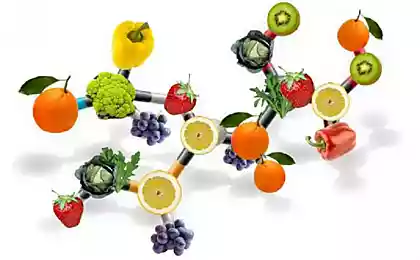978
On the "perfect killers"
Trying to figure out what the poison is strongest in nature, it is doomed to failure - too many variables affect the results. However, if you take only one parameter - the average lethal dose, only one species of living creatures - laboratory mice, only one route of administration - intramuscular, evaluate not solid poisons and their individual components, then some idea of the "perfect killers" to get possible .
Average lethal dose, DL50 (lat. Dosis letalis), causes the death of half of the experimental animals (DL100 - the dose is minimal enough to kill anyone who got it). DL measured in milligrams of substance per 1 kg of animal body weight (mg / kg), the rating is given in parentheses after the name of the substance. Thus, the top 10 of the most toxic poisons with DL50 - mice when administered intramuscularly.
Neurotoxin II (0, 085 mg / kg)
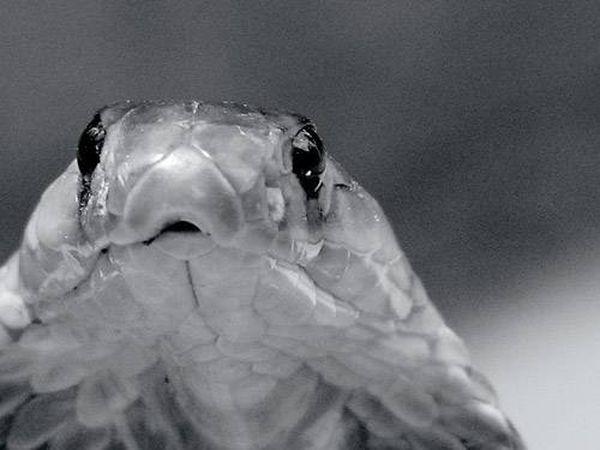
Where to take Component Central Asian cobra venom (Naja oxiana)
It causes flaccid paralysis of skeletal and respiratory muscles due to non-depolarizing block N-cholinergic receptor striated muscle (kurarepodobnymi effect).
Short description Central Asian cobra, which reaches a length of 1, 5-1, 6 m, distributed in the north-western India, Pakistan, Afghanistan and north-eastern Iran. In Central Asia, this snake is found in Turkmenistan, Tajikistan and Uzbekistan. The northern boundary of the range - the backbone of the Nura-Tau and Tau Mountain Belle-Ata, west - spurs of the Turkestan range.
Antidote: horse serum purified concentrated liquid
Alpha-latrotoxin (0, 045 mg / kg)
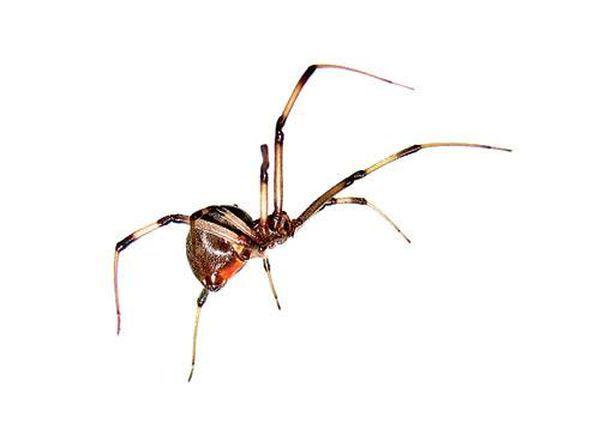
Where to take: consisting armed with 31 species of spiders genus Latrodectus (karakurt)
Neurotoxin that causes the release of acetylcholine from presynaptic terminals, noradrenaline and other mediators with subsequent depletion of stocks.
Antidote: antitoxic serum "Antikarakurt»
BRIEF DESCRIPTION OF WIDOW ("black widow") are found in tropical, subtropical and even temperate latitudes of all continents except Antarctica. The risk to humans of only females (the size of their body - up to 2 cm). Males are much smaller (0 to 5 cm) and are not able to bite through human skin. The toxicity of the venom has a pronounced seasonal dependence: September powerful May about ten times.
Alpha-conotoxin (0, 012 mg / kg)
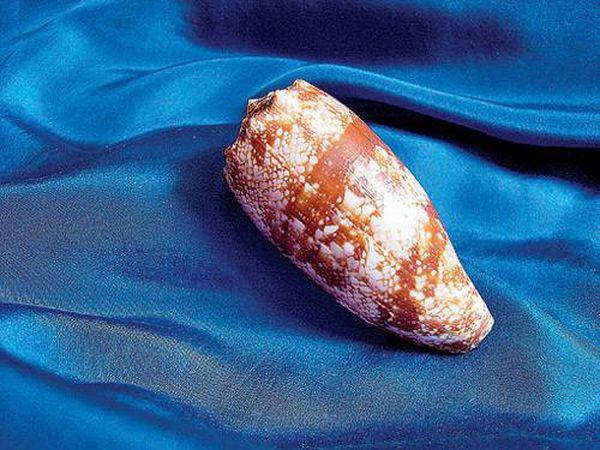
Where to take Component legkosostavnogo shellfish poison Conus geographus
Neurotoxin that blocks the N-cholinergic receptors of muscle and peripheral nerves.
Antidote: antitoxic serum in development as an antidote used anticholinesterase drugs
Short description Sinks cones are 15-20 cm in length. Habitat - the eastern and northern coast of Australia, the eastern coast of Southeast Asia and China, and the Central Pacific.
Chirikitotoksin (DL50 = 0, 01 mg / kg)

Where to take: produces skin toads Atelopus chiriquiensis
Structural analogs of tetrodotoxin - differs only in the replacement group CH2OH yet unidentified radical. Neurotoxin block sodium and potassium channels in the membranes of nerve endings.
Antidote: No specific antidote, spend detoxication and symptomatic therapy
Quick description Small (males - about 3 cm, females - 3, 5-5 cm) toad with a beautiful name chirikita are found on the isthmus between North and South America - in Panama and Costa Rica. Type is endangered. The toxin produces leather Chiriqui and virulence, we recall, was evaluated when administered intramuscularly. But if you spread the boom ...
Tityutoksin (0, 009 mg / kg)
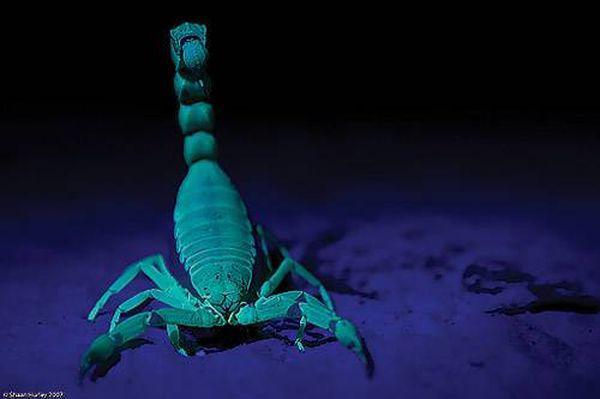
Where do I get one of the components of scorpion venom yellow tolstohvostogo (Androctonus australis)
Neurotoxin slows the fast inactivation of sodium channels electrically excitable membranes, that leads to the development of persistent depolarization.
Antidote: antitoxic serum "Antiskorpion." As a little less effective replacement can be used serum "Antikarakurt»
Androctonus australis - medium sized scorpions, up to 10 cm. Australia has no relationship: australis in Latin - "southern" (a androctonus in Greek - "a murderer"). Meet in the Middle East, in the north and south-east Africa (Algeria, Tunisia, Lebanon, Israel, Egypt, Jordan, UAE, Iraq, Iran, etc.).
Taypoksin (taypotoksin) (0, 002 mg / kg)
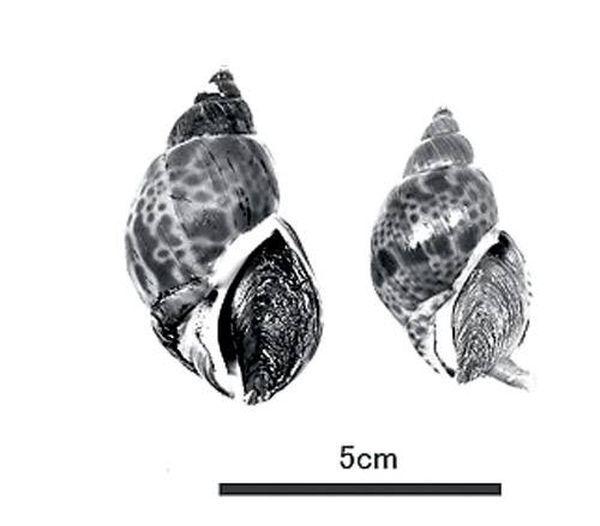
Where to take Component venom of the poisonous snake on earth - the Australian Taipan (Oxyuranus scutellatus). Before the development of an antidote (1955) to 90% perished bitten
Presynaptic toxin possesses phospholipase activity and causes a characteristic change in the release of mediators of nerve impulse (weakening secretion increased and finally its complete inhibition). It has neurotoxic and miotoksicheskim action.
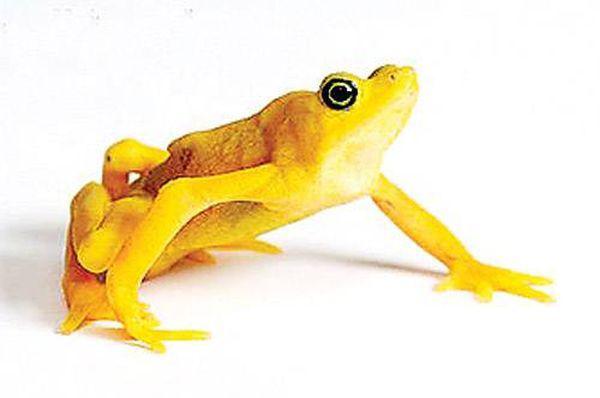
Antidote: antitoxic serum taypanovaya
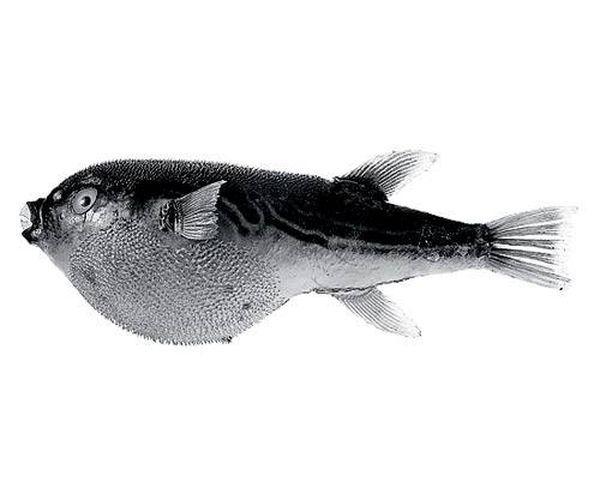
Brief description of Taipan reach a length of 2 to 3, 6 m. Differ very aggressive nature, but, fortunately, found only in sparsely populated areas in the north-east coast of Australia and southern New Guinea.
Taypoksin (taypotoksin) (0, 002 mg / kg)
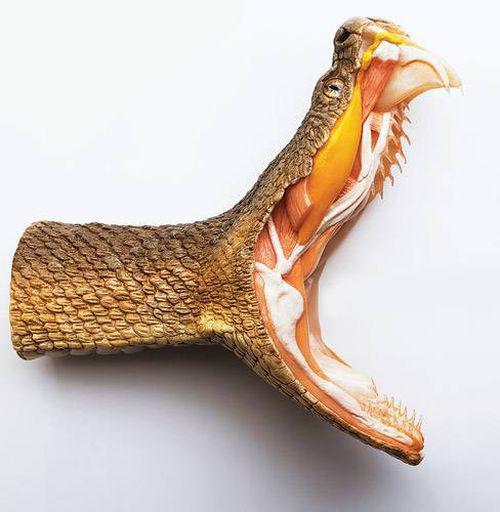
Where to take Component venom of the poisonous snake on earth - the Australian Taipan (Oxyuranus scutellatus). Before the development of an antidote (1955) to 90% perished bitten
Presynaptic toxin possesses phospholipase activity and causes a characteristic change in the release of mediators of nerve impulse (weakening secretion increased and finally its complete inhibition). It has neurotoxic and miotoksicheskim action.
Antidote: antitoxic serum taypanovaya
Brief description of Taipan reach a length of 2 to 3, 6 m. Differ very aggressive nature, but, fortunately, found only in sparsely populated areas in the north-east coast of Australia and southern New Guinea.
Batrachotoxin (0, 002 mg / kg)

Where to take: skin secretions of frogs, poison dart frogs genus Phyllobates
It has strong cardiotoxic causing arrhythmia and ventricular fibrillation of the heart, paralyzing the respiratory muscles, myocardium and skeletal muscles. Resistant and permanently increases the permeability of the resting membrane for sodium ions, blocking axonal transport.
Antidote: No specific antidote, spend detoxication and symptomatic therapy. Tetrodotoxin is a potent antagonist - like cures ...
Brief description of tree frogs do not exceed 5 cm in length, usually brightly colored in gold, black and orange, black and yellow tones (warning coloring). If you will bring to South America from Nicaragua to Colombia - do not grab their hands.
Palytoxin (0, 00015 mg / kg)
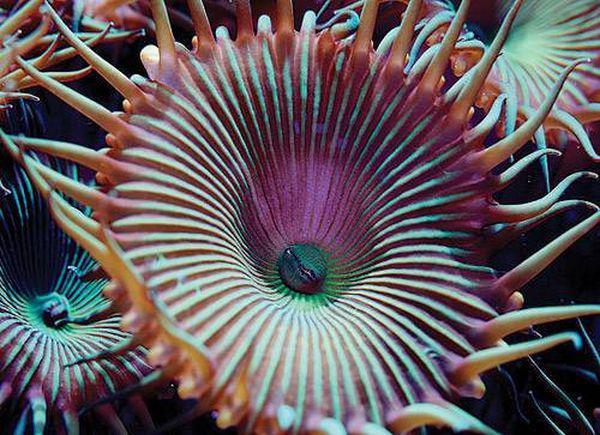
Where to take: a six-rays found in coral polyps Palythoa toxica, P. tuberculosa, P. saribacorum
Cytotoxic venom. Damages sodium-potassium pump cell, disrupting the concentration gradient of the ions between the cell and the extracellular environment. Causes of chest pain is angina pectoris, tachycardia, shortness of breath, hemolysis. Death occurs within the first few minutes after the injection of the polyp.
Antidote: No specific antidote, symptomatic therapy (if you have time). Animal studies show that effective can be the simple vasodilators such as papaverine and isosorbide dinitrate.
Short description
The body of these polyps - the inhabitants of the coral reefs of the Indian and Pacific oceans - is not out of eight, like ordinary corals, and six or more than eight, the amount placed on several rays corolla, usually a multiple of six.
Diamphotoxin (0, 000 025 mg / kg)
A single chain polypeptide opening "input" all sodium-potassium channels in the cell membrane, resulting in cell death due to intracellular electrolyte balance disturbances. Has neurotoxic and haemolytic effect is particularly pronounced, able in a short time to reduce the content of hemoglobin in the blood by 75% due to the massive destruction of erythrocytes. Bushmen now use crushed larvae diamfidy: Coat of manure boom can knock out 500-pound adult giraffe.
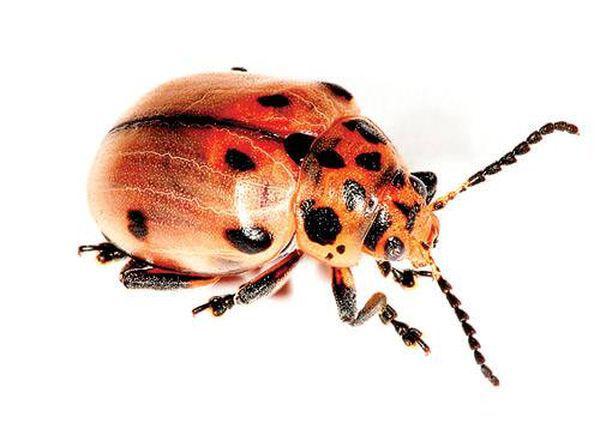
Short description
Adult beetles reach 10-12 mm in length. Females lay eggs on the branches of plants Commifora (Commiphora). The larvae burrow into the ground and pupate in a few years to develop pupae. Therefore, to find cocoons Diamphidia for hunters is not a problem.
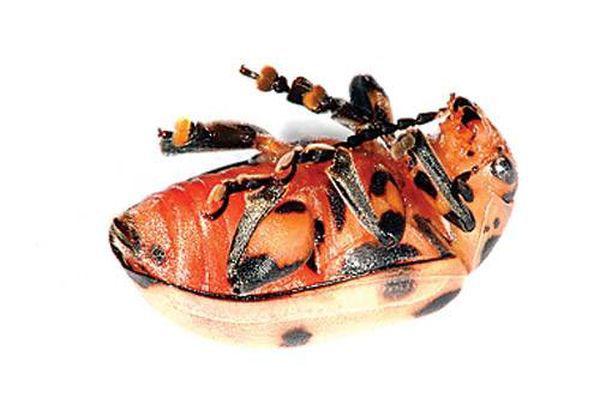
Antidote: There is no specific antidote. Spend detoxication and symptomatic therapy
Where to take: the most powerful poison of animal origin on the planet contained in the hemolymph ("blood") larvae South African leaf beetle genus Diamphidia (D.Klocusta, D.Knigro-ornata, D.Kfemoralis) belonging to the same family with all known Kartoshkin pest - Colorado potato beetle. It is intended solely for defense against predators
Average lethal dose, DL50 (lat. Dosis letalis), causes the death of half of the experimental animals (DL100 - the dose is minimal enough to kill anyone who got it). DL measured in milligrams of substance per 1 kg of animal body weight (mg / kg), the rating is given in parentheses after the name of the substance. Thus, the top 10 of the most toxic poisons with DL50 - mice when administered intramuscularly.
Neurotoxin II (0, 085 mg / kg)

Where to take Component Central Asian cobra venom (Naja oxiana)
It causes flaccid paralysis of skeletal and respiratory muscles due to non-depolarizing block N-cholinergic receptor striated muscle (kurarepodobnymi effect).
Short description Central Asian cobra, which reaches a length of 1, 5-1, 6 m, distributed in the north-western India, Pakistan, Afghanistan and north-eastern Iran. In Central Asia, this snake is found in Turkmenistan, Tajikistan and Uzbekistan. The northern boundary of the range - the backbone of the Nura-Tau and Tau Mountain Belle-Ata, west - spurs of the Turkestan range.
Antidote: horse serum purified concentrated liquid
Alpha-latrotoxin (0, 045 mg / kg)

Where to take: consisting armed with 31 species of spiders genus Latrodectus (karakurt)
Neurotoxin that causes the release of acetylcholine from presynaptic terminals, noradrenaline and other mediators with subsequent depletion of stocks.
Antidote: antitoxic serum "Antikarakurt»
BRIEF DESCRIPTION OF WIDOW ("black widow") are found in tropical, subtropical and even temperate latitudes of all continents except Antarctica. The risk to humans of only females (the size of their body - up to 2 cm). Males are much smaller (0 to 5 cm) and are not able to bite through human skin. The toxicity of the venom has a pronounced seasonal dependence: September powerful May about ten times.
Alpha-conotoxin (0, 012 mg / kg)

Where to take Component legkosostavnogo shellfish poison Conus geographus
Neurotoxin that blocks the N-cholinergic receptors of muscle and peripheral nerves.
Antidote: antitoxic serum in development as an antidote used anticholinesterase drugs
Short description Sinks cones are 15-20 cm in length. Habitat - the eastern and northern coast of Australia, the eastern coast of Southeast Asia and China, and the Central Pacific.
Chirikitotoksin (DL50 = 0, 01 mg / kg)

Where to take: produces skin toads Atelopus chiriquiensis
Structural analogs of tetrodotoxin - differs only in the replacement group CH2OH yet unidentified radical. Neurotoxin block sodium and potassium channels in the membranes of nerve endings.
Antidote: No specific antidote, spend detoxication and symptomatic therapy
Quick description Small (males - about 3 cm, females - 3, 5-5 cm) toad with a beautiful name chirikita are found on the isthmus between North and South America - in Panama and Costa Rica. Type is endangered. The toxin produces leather Chiriqui and virulence, we recall, was evaluated when administered intramuscularly. But if you spread the boom ...
Tityutoksin (0, 009 mg / kg)

Where do I get one of the components of scorpion venom yellow tolstohvostogo (Androctonus australis)
Neurotoxin slows the fast inactivation of sodium channels electrically excitable membranes, that leads to the development of persistent depolarization.
Antidote: antitoxic serum "Antiskorpion." As a little less effective replacement can be used serum "Antikarakurt»
Androctonus australis - medium sized scorpions, up to 10 cm. Australia has no relationship: australis in Latin - "southern" (a androctonus in Greek - "a murderer"). Meet in the Middle East, in the north and south-east Africa (Algeria, Tunisia, Lebanon, Israel, Egypt, Jordan, UAE, Iraq, Iran, etc.).
Taypoksin (taypotoksin) (0, 002 mg / kg)

Where to take Component venom of the poisonous snake on earth - the Australian Taipan (Oxyuranus scutellatus). Before the development of an antidote (1955) to 90% perished bitten
Presynaptic toxin possesses phospholipase activity and causes a characteristic change in the release of mediators of nerve impulse (weakening secretion increased and finally its complete inhibition). It has neurotoxic and miotoksicheskim action.

Antidote: antitoxic serum taypanovaya

Brief description of Taipan reach a length of 2 to 3, 6 m. Differ very aggressive nature, but, fortunately, found only in sparsely populated areas in the north-east coast of Australia and southern New Guinea.
Taypoksin (taypotoksin) (0, 002 mg / kg)

Where to take Component venom of the poisonous snake on earth - the Australian Taipan (Oxyuranus scutellatus). Before the development of an antidote (1955) to 90% perished bitten
Presynaptic toxin possesses phospholipase activity and causes a characteristic change in the release of mediators of nerve impulse (weakening secretion increased and finally its complete inhibition). It has neurotoxic and miotoksicheskim action.
Antidote: antitoxic serum taypanovaya
Brief description of Taipan reach a length of 2 to 3, 6 m. Differ very aggressive nature, but, fortunately, found only in sparsely populated areas in the north-east coast of Australia and southern New Guinea.
Batrachotoxin (0, 002 mg / kg)

Where to take: skin secretions of frogs, poison dart frogs genus Phyllobates
It has strong cardiotoxic causing arrhythmia and ventricular fibrillation of the heart, paralyzing the respiratory muscles, myocardium and skeletal muscles. Resistant and permanently increases the permeability of the resting membrane for sodium ions, blocking axonal transport.
Antidote: No specific antidote, spend detoxication and symptomatic therapy. Tetrodotoxin is a potent antagonist - like cures ...
Brief description of tree frogs do not exceed 5 cm in length, usually brightly colored in gold, black and orange, black and yellow tones (warning coloring). If you will bring to South America from Nicaragua to Colombia - do not grab their hands.
Palytoxin (0, 00015 mg / kg)

Where to take: a six-rays found in coral polyps Palythoa toxica, P. tuberculosa, P. saribacorum
Cytotoxic venom. Damages sodium-potassium pump cell, disrupting the concentration gradient of the ions between the cell and the extracellular environment. Causes of chest pain is angina pectoris, tachycardia, shortness of breath, hemolysis. Death occurs within the first few minutes after the injection of the polyp.
Antidote: No specific antidote, symptomatic therapy (if you have time). Animal studies show that effective can be the simple vasodilators such as papaverine and isosorbide dinitrate.
Short description
The body of these polyps - the inhabitants of the coral reefs of the Indian and Pacific oceans - is not out of eight, like ordinary corals, and six or more than eight, the amount placed on several rays corolla, usually a multiple of six.
Diamphotoxin (0, 000 025 mg / kg)
A single chain polypeptide opening "input" all sodium-potassium channels in the cell membrane, resulting in cell death due to intracellular electrolyte balance disturbances. Has neurotoxic and haemolytic effect is particularly pronounced, able in a short time to reduce the content of hemoglobin in the blood by 75% due to the massive destruction of erythrocytes. Bushmen now use crushed larvae diamfidy: Coat of manure boom can knock out 500-pound adult giraffe.

Short description
Adult beetles reach 10-12 mm in length. Females lay eggs on the branches of plants Commifora (Commiphora). The larvae burrow into the ground and pupate in a few years to develop pupae. Therefore, to find cocoons Diamphidia for hunters is not a problem.

Antidote: There is no specific antidote. Spend detoxication and symptomatic therapy
Where to take: the most powerful poison of animal origin on the planet contained in the hemolymph ("blood") larvae South African leaf beetle genus Diamphidia (D.Klocusta, D.Knigro-ornata, D.Kfemoralis) belonging to the same family with all known Kartoshkin pest - Colorado potato beetle. It is intended solely for defense against predators























